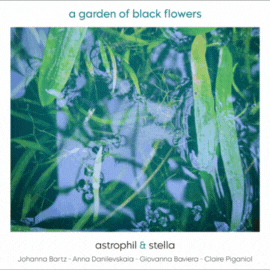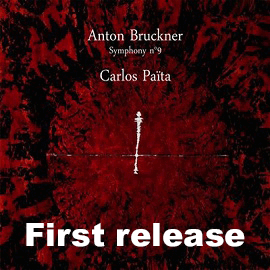The Bucharest Symphony Orchestra (Orchestra Simfonică București) and its Principal Conductor, John Axelrod, in the frame of partnership with Classeek Music, announce the signing and upcoming September 2023 release on Orchid Classics of the project ‘Schumann 41/51: Florestan & Eusebius’, recorded in studio at the Sala Gloria in Bucharest, with live video performance at the Romanian Athenaeum on March 22, 2023.
The press release says: « ‘Schumann 41/51: Florestan & Eusebius’ offers the opportunity to discover or even rediscover Schumann’s music and his madness. As the esteemed concert pianist and psychiatrist Dr. Richard Kogan has confirmed in his presentations and lectures, ‘Schumann’s music illustrates the complex relationship between creative genius and psychiatric illness.’ He believes that Schumann’s music is a ‘dramatic example of the capacity of bipolar disorder to influence the creative process’.
Announcing during the two week mental health awareness period in the UK and EU, from May 15-28, 2023, and as an ongoing contribution to the dialogue and understanding of Robert Schumann’s Bi-Polar condition, Orchid Classics is pleased to announce the exclusive release of this unique presentation of both versions of Schumann’s 4th Symphony: the original version, composed and premiered in 1841 and published nearly 50 years later with the help from Johannes Brahms, and the revised 1851 version, completed three years before his untimely death, and defended and protected by his widow, Clara Schumann.
Both versions of the same 4th Symphony are very different, even from the start. The 1841 is Italianate in the late classical style and marked Andante con moto. The 1851, with a tempo indication of Ziemlich Langsam paints a different portrait in the German romantic tradition. Both versions offer insights into the history of the two people who loved Robert Schumann most, and show how these two versions reflect Schumann’s bi-polar dual nature.
Bipolar disorder, also known as bipolar affective disorder, is a psychiatric disorder characterized by frequent mood swings that range from periods of euphoria to periods of depression. The disorder can severely impact a person’s life, affecting relationships, daily activities, and the ability to work or learn. Composer Robert Schumann’s music was influenced by this illness, and this symphony, like much of his music, can be seen as an expression of it.
This recording, perhaps the only time in discography that both versions are included together, represents a joint effort to portray Schumann’s work and to better understand his illness and its impact on his life and music. What more can the symphony tell us?
The love between Robert Schumann and Clara Wieck Schumann is a moving story that can be heard in the d minor symphony. For Robert and Clara Schumann, the universal language of music was their personal language of love. Schumann allowed his music to express his deep love for Clara. Their love survived parental disapproval, gossip, and discomfort in social situations to become one of the great loves of the classical music world. In the first year of their marriage from 1840-1841, known as his ‘Year of Song’ and ‘Year of the Symphony,’ Robert Schumann was in a manic phase and wrote over 130 songs for voice and piano, his 1st Symphony, ‘Frühling,’ his d minor Symphony, which became the 4th and many more important works. The d minor symphony was particularly inspired both by his feelings for Clara from the time he courted her and by their new life together. The public heard the music of Robert and Clara Schumann, but few knew that this music contained secret messages from the composer to his muse, such as thematic material that mentioned her name or works dedicated to her. The descending fifth of the opening movement of the d minor symphony was often used by him to symbolise her, calling it the Clara Theme, as it had been part of a theme in one of her compositions. Both Robert and Clara used music as an expression of their deepest thoughts. But Robert Schumann uniquely called himself Florestan and Eusebius, two distinct personalities representing both his editorial anonymity as a critic and the emotional contrasts heard in his music.
Maestro Axelrod explains his motivations, « After recording the Brahms symphonies and the songs of Clara Schumann, I am grateful to the Bucharest Symphony Orchestra in joining me on my next musical journey to delve deeply into Robert Schumann’s life, his love, and his long struggle for mental health. While much of his music and writings reflect his bipolar condition, these two publications, one written during a manic creative year and the other in the depths of his emotional despair, provide for me the most telling representation of this radical romantic. While it was endlessly interesting for me, I hope to share this musical discovery with my fellow musicians, our audience and listeners. In the process, perhaps we will all appreciate that even those who suffer from mental illness can create works of genius. Ultimately, we may learn something new about this extraordinary man who for many remains an enigma. »
Catalin Opritoiu, President of the Bucharest Symphony Orchestra Association and Founder says: « In the harmonious realm where talent meets dedication, the unique Schumann 41/51 recording project with Maestro John Axelrod resonates as a testament to artistic synergy. As we embark on this musical voyage, guided by Axelrod’s masterful conducting and the passion of the Bucharest Symphony Orchestra, we celebrate the profound beauty and emotional depth of Schumann’s works. Together, we strive to unravel the intricacies of these masterpieces, breathing life into every note, and inviting listeners to experience the profound tapestry of human emotions through the universal language of music. »



























